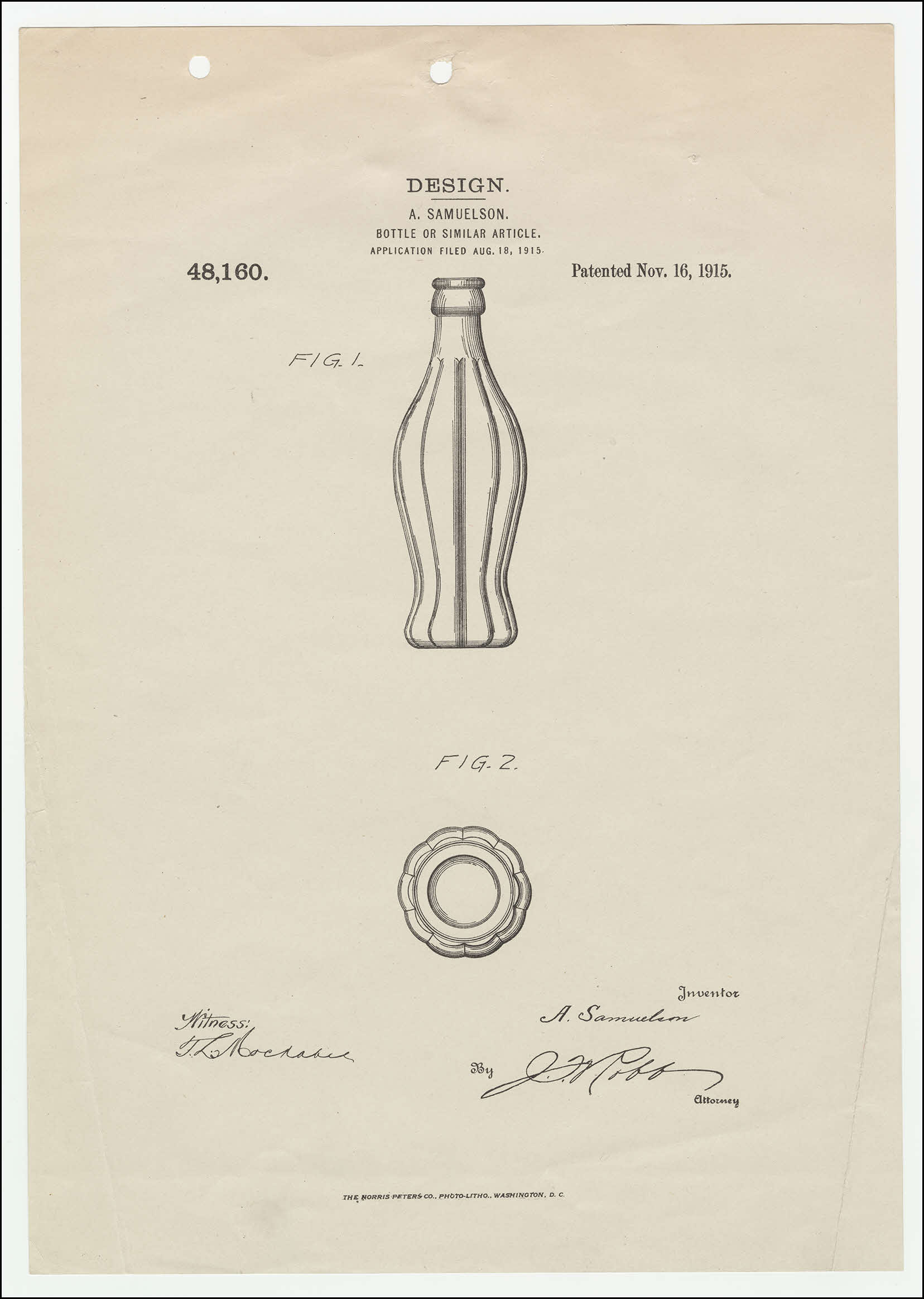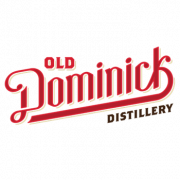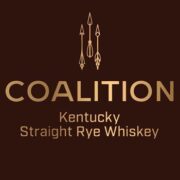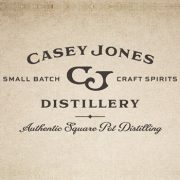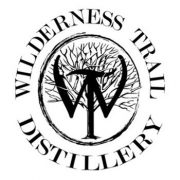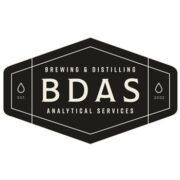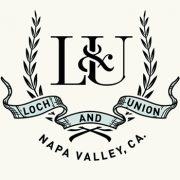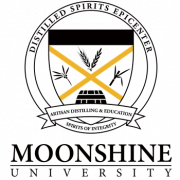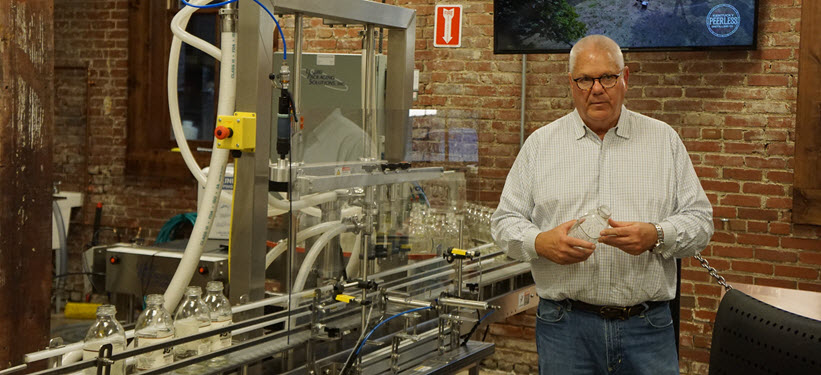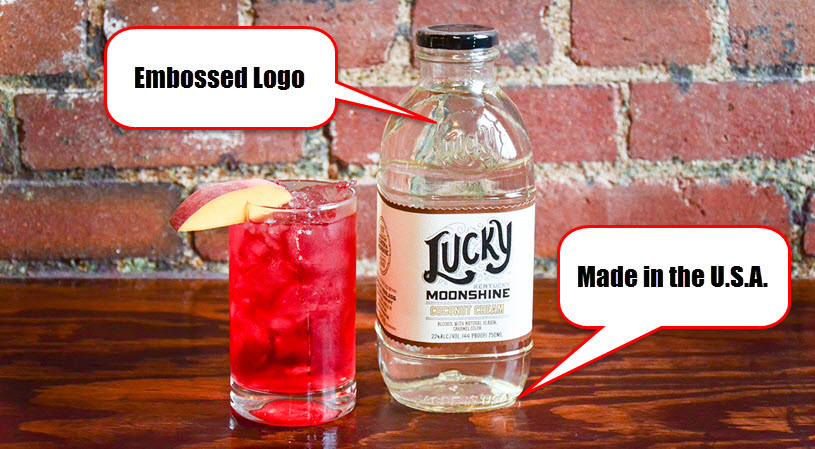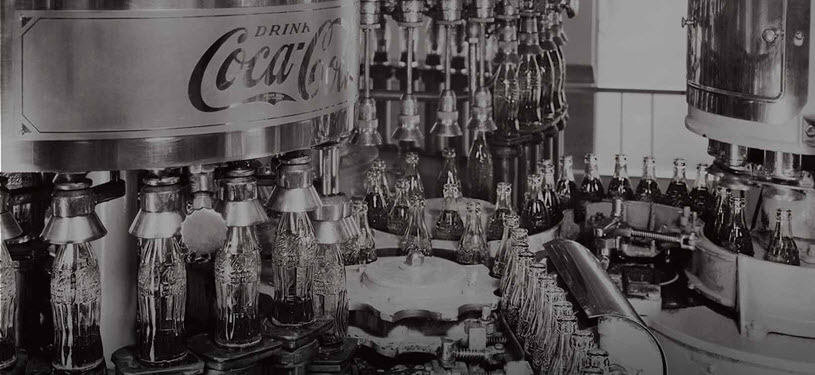
The Coca-Cola bottle celebrates 100 years this month. When people hear the name Coca-Cola, they immediately have a picture in their mind of a beautiful glass bottle, curved, slightly green, vivacious and sexy. There is no mistaking; the Coca-Cola bottle is not only part of Americana, it’s an international brand icon. In fact, Forbes lists Coca-Cola as #4 on their list of The World’s Most Valuable Brands. You can see the original 1915 patent approved for the Coca-Cola bottle below.
Off the Shelf or Custom Bottle?
Having a unique bottle design for your craft spirits may not be the cheapest route to go when you are just starting out but, in the long run, it could help to make your brand a future icon. We’ve all seen new distilleries with their well designed labels but, they often skimp on the bottle and go with something generic.
Kentucky Lucky Moonshine Goes with Custom Bottle
On a recent visit to start up Kentucky Peerless Distilling, founder Corky Taylor lead a tour through the recently opened distillery. Part of the tour included a stop at the bottling line. Corky is a believer in selling their own spirits. Rather than repacking someone else’s aged spirits, they went the route of creating their own moonshine to get revenue in the door today as they let their own Bourbon and Rye mature. A closer look at the Kentucky Lucky Moonshine bottle reveals an embossed logo and text that reads, “Made in the U.S.A.”
Stay Informed: Sign up here for our Distillery Trail free email newsletter and be the first to get all the latest news, trends, job listings and events in your inbox.
Corky went on to tell a story of how the custom bottle has already paid off for them. Kentucky Peerless sits about one hour from Fort Knox military base. They often have active duty as well as retired military folks tour the distillery. Corky says when they see the “Made in the U.S.A.” on the bottles that he’ll often hear a “Huzzah.” He knows that those bottles cost more than something imported but he also believes that those military personnel will often walk out with an extra bottle or two of moonshine knowing that as many parts or ingredients as possible are either sourced locally or made in the U.S.A.
History of the Coca-Cola Bottle
According to Coca-Cola, in 1899, two Chattanooga lawyers, Joseph Whitehead and Benjamin Thomas, traveled to Atlanta to negotiate the rights to bottle Coca-Cola. The product had been an increasingly popular soda fountain drink established a mere 13 years previously. In fountain form, Coca-Cola grew from an average of nine drinks per day sold in 1886 to being sold in every state of the US by 1900. Thomas and Whitehead wanted to capitalize on the popularity of the drink by bottling it to be consumed outside the four walls of a soda fountain.
There must have been a lot of unscrupulous merchants in the late 1800’s stretching out drinks with who knows what because around the same time that Coca-Cola started being bottled is about the same time that whiskey starting being bottled. The Bottled in Bond Act was created in 1897 and implemented in 1901. Part of that law requires the bottle to be sealed to avoid anything else from being added to the final product.
Copy Cat Bottles Cause Confusion and Opportunity
The bottles used in those days were simple straight-sided bottles that were typically brown or clear. The Coca-Cola Company required that the bottlers emboss the famous Coca-Cola logo onto every bottle. However, competitor brands like Koka-Nola, Ma Coca-Co, Toka-Cola and even Koke copied or only slightly modified the spencerian script logo. These competitor bottles created confusion among consumers. While The Coca-Cola Company began litigation against these infringements, the cases often took years and the bottlers were constantly asking for more protection.
Bottle Design Contest
On April 26, 1915, the Trustees of Coca-Cola voted to expend up to $500 to develop a distinctive bottle for Coca-Cola. So, eight to 10 glass companies across the U.S. subsequently received a challenge to develop a new unique bottle for the brand.
The Coca-Cola Bottle Creative Brief
The mission: To make a bottle, the shape is so distinctive that you can identify it in a dark room, just by holding it in your hand. And that was recognizable even if it was broken into shards.
With that simple creative brief, the competition was on.
For it was the Swede Alexander Samuelson in the “Root Glass Company” in Terre Haute, Indiana who hatched the idea for the bottle that has since become a classic. The bottle shape was inspired by the shape of the cocoa bean, which is a bit funny because cocoa is not part of the secret recipe of Coca-Cola. It was in and of itself not so easy for Alexander to know. The recipe was – and is – a secret.
Coca-Cola Bottle Patent Granted But Not to Coca-Cola
The bottle was patented November 16, 1915. It is interesting to note that the patent submission was made without the signature embossed Coca-Cola script lettering. This was done to protect the secrecy of the design and the ultimate client. The patent was modified somewhat to better suit the contemporary bottling machines.
Winning Coca-Cola Bottle Selected – The Rest is History
In early 1916, a committee composed of bottlers and Coca-Cola officials met to choose the bottle design. The Root version was the clear winner and The Coca-Cola Company and the Root Glass Company entered an agreement to have six glass companies across the U.S. use the bottle shape. The contract called for the bottles to be colored with “German Green” which was later called “Georgia Green” in homage to the home state of The Coca-Cola Company. It also called for the name of the city which was placing the glass order to be embossed on the bottom of the bottle. These city names entertained consumers for decades and led to kids to compare whose bottle was from further away for generations. The weight of glass was to be no less than 14.5 ounces, which when filled with the 6.5 ounces of Coca-Cola meant each bottle weighed more than a pound. The new design went into production in 1916. Since then it has been with us.
Original Coca-Cola 1915 Bottle Patent
